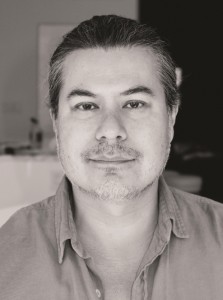Justin’s Japan: Interview with ‘Speed Tribes’ Author/JET Alum Karl Taro Greenfeld

“From being born in Kobe and spending time in Japan as a child, I had a decent feel for Japanese culture and even a little bit of the language. But what best prepared me for the JET Program was living in Paris during my junior year in college; that familiarized me with living in a foreign country and how one had to adapt, especially back then in pre-Internet times.” (Esmee Greenfeld)
By JQ magazine editor Justin Tedaldi (CIR Kobe-shi, 2001-02) for Examiner.com. Visit his Japanese culture page here for related stories.
Born in Kobe and raised in America, Karl Taro Greenfeld (Kanagawa-ken, 1988-89) is the author of six books, and over the past two decades his writing has graced everything from the Paris Review to Playboy to Time Asia (where he served as editor for two years). His first book was Speed Tribes: Days and Nights with Japan’s Next Generation, a gritty, true-life portrait of Tokyo’s urban underground. Published in 1994, it exposed a fascinating side of post-bubble Japan rarely seen (or reported by) foreigners.
Now living in Tribeca with his wife and two daughters, Greenfeld has recently penned his debut novel, Triburbia, which once again finds a muse in his current milieu. The New York Times calls it “an artful and casually cohesive work of fiction imbued with anthropological insight,” and Greenfeld will be appearing at an author event at (where else?) Barnes & Noble Tribeca on Sept. 5.
In this exclusive interview, I spoke with Greenfeld about his early days in Japan during its economic peak, his highlights as a journalist covering the nation’s subculture, and a never-before-told story about the fate of a planned Japanese-language release of Speed Tribes.
Triburbia is a story about Tribeca fathers at the end of the last decade facing a changing neighborhood, which is similar to your own life. What made you to decide to write a novel about this?
I was living in Tribeca and then we moved to Pacific Palisades, California for a few years, and that caused me to look back at Tribeca and think about that time and place. It’s very similar to how I wrote Speed Tribes after moving from Japan back to the U.S. Somehow, when I am living in a place the intensity of experience makes it hard to write about. But with the perspective of distance, ideas come into focus and I can get a better idea of what I want to say about a place.
At 23, you served on the JET Program in Kanagawa Prefecture from 1988-89. How did JET come on your radar, and what kinds of jobs did you have before that?
I don’t remember how I heard about JET. I think it was something my mother found out about and passed on to me through her contacts at the Japanese Consulate in Los Angeles. Before that I was working in a clothing store and was just starting to write for magazines. I’d had small stories in the New York Times and Harper’s Bazaar and I already knew that’s what I wanted to do. But then I was accepted into the JET Program, which turned out to be a lucky break because it got me to Japan, though further from Tokyo than I would have liked.
You were born in Kobe, grew up in Los Angeles and went to college in New York. How did this exposure to different cultures and lifestyles prepare you for your time on JET?
From being born in Kobe and spending time in Japan as a child, I had a decent feel for Japanese culture and even a little bit of the language. But what best prepared me for the JET Program was living in Paris during my junior year in college; that familiarized me with living in a foreign country and how one had to adapt, especially back then in pre-Internet times. I remember getting theJapan Times every day and that was my only connection to what was going on in America, a few baseball results—they didn’t print box scores—and maybe a few AP stories picked up about Bush or Dukakis. That was it!
How about being perceived as “half-Japanese” or “Asian” during your time in Kanagawa?
I think being half-Japanese was actually a disadvantage in the JET Program. For one thing, when Japanese kids hear they are getting a foreign teacher, they want a foreign teacher: A tall, strapping, blonde, preferably female, would be ideal. When I showed up, looking Japanese, I think it was a little bit of a disappointment. Never mind how lousy a teacher I actually was.
What were the biggest life lessons you picked up from JET? How about from that first year from working in Japan?
I learned a few things: For one, I learned that I shouldn’t confuse loneliness and happiness. That sometimes, I could be very lonely, and for the first six months or so in Kugenuma, where I lived in Kanagawa, I was intensely lonely. But I was strangely productive. I wrote a novel (never published), read a few hundred books, and had a lot of time to think about writing and what I wanted to say. It was the first time in my life that I wrote every day for a year.
For the complete interview, click here.


Comments are closed.